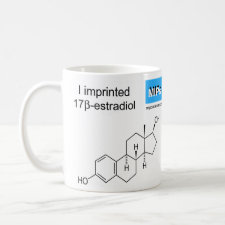
Authors: Hao Y, Gao RX, Shi L, Liu DC, Tang YH, Guo ZJ
Article Title: Water-compatible magnetic imprinted nanoparticles served as solid-phase extraction sorbents for selective determination of trace 17β-estradiol in environmental water samples by liquid chromatography.
Publication date: 2015
Journal: Journal of Chromatography A
Volume: 1396
Page numbers: 7-16.
DOI: 10.1016/j.chroma.2015.03.083
Alternative URL: http://www.sciencedirect.com/science/article/pii/S0021967315005221
Abstract: Endocrine disrupting compounds (EDCs) are a potential risk for wildlife and humans for their existence in water. The efficient extraction and clean-up steps are required before detection of low concentration levels of EDCs. In this work, a novel water-compatible magnetic molecularly imprinted nanoparticles is synthesized for the selective extraction of 17β-estradiol (E2) in environmental water samples. The preparation is carried out by introducing aldehyde groups to the surface of amino-functionalized magnetic nanoparticles through a simple one-step modification, followed by copolymerization of functional monomer gelatin and template E2 via surface imprinting technique. The gelatin with abundant active groups could not only act as functional monomer reacting with template, but also assemble covalently at the surface of magnetic nanoparticles. At the same time, gelatin would improve the water-compatibility of imprinted materials for attaining high extraction efficiency. To obtain high imprinting effect, the preparation conditions are optimized in detail using Central composite design-response surface methodology. The resultant polymers have uniform spherical shape with a shell thickness of about 8 nm, stable crystalline form, and super-paramagnetic property. Meanwhile, the obtained polymers have high capacity of 12.87 mg g-1 and satisfactory selectivity to template molecule. To testify the feasibility of the magnetic imprinted polymers in sample pretreatment, a method for determination of trace E2 in environmental water samples was set up by combination of solid-phase extraction (SPE) using the prepared polymers as sorbents and HPLC for rapid isolation and determination of E2. The limit of detection of proposed method is 0.04 ng mL-1, the intra- and inter-day relative standard deviations (RSDs) are less than 4.6% and 5.7%, respectively. The recoveries of E2 from environmental water samples are in the range from 88.3% to 99.1% with the RSDs less than 7.2%
Template and target information: 17β-estradiol, E2
Author keywords: water compatibility, Surface imprinting technique, magnetic separation, Solid-phase extraction, Trace detection



Join the Society for Molecular Imprinting

New items RSS feed
Sign-up for e-mail updates:
Choose between receiving an occasional newsletter or more frequent e-mail alerts.
Click here to go to the sign-up page.
Is your name elemental or peptidic? Enter your name and find out by clicking either of the buttons below!
Other products you may like:
 MIPdatabase
MIPdatabase









